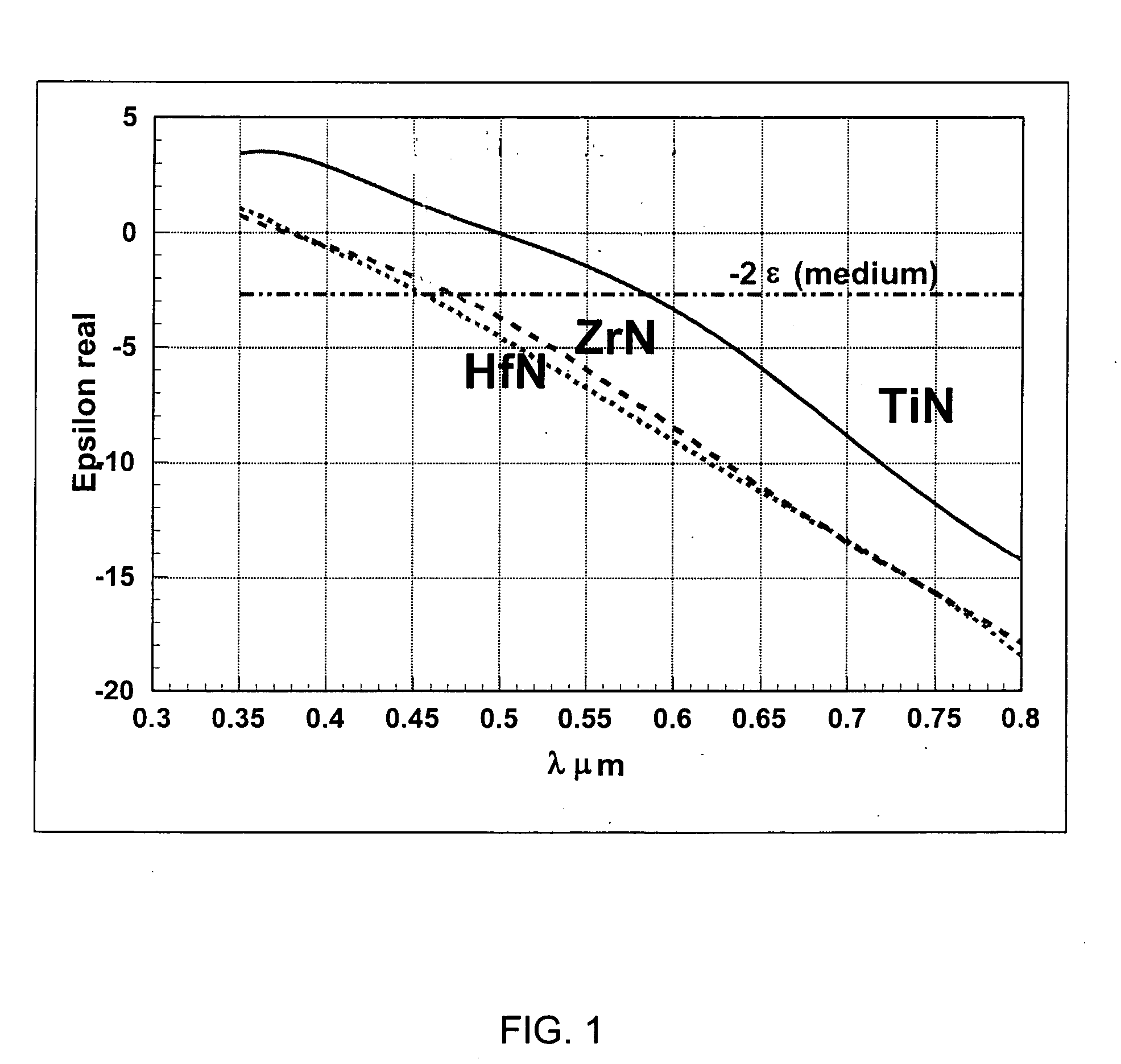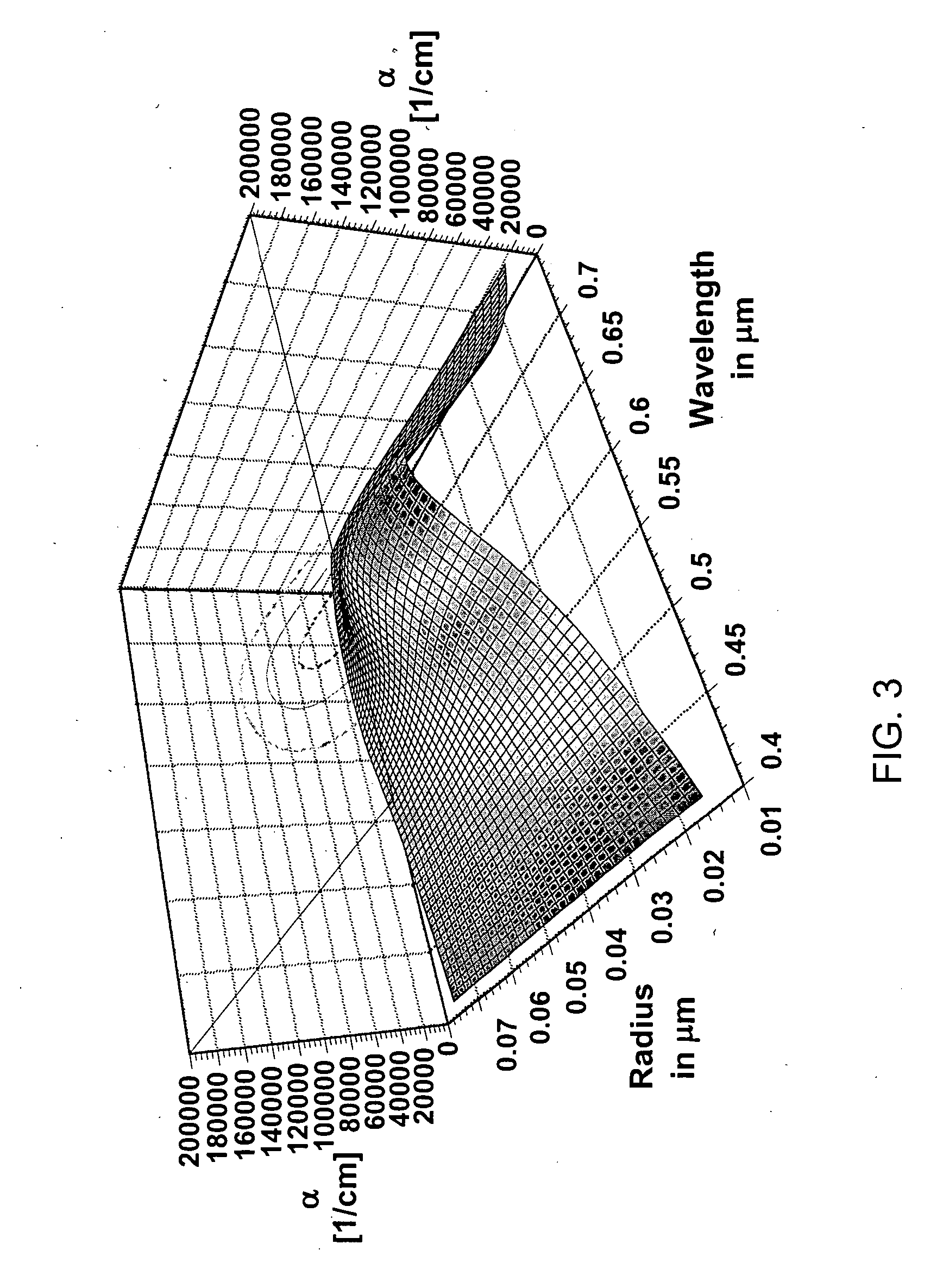Encapsulated nanoparticles for the absorption of electromagnetic energy
a technology of electromagnetic energy and nanoparticles, applied in the field of selective absorption of electromagnetic radiation, can solve the problems of high cost dispersion within the carrier, high pigment or dye concentration, and special mixing techniques
- Summary
- Abstract
- Description
- Claims
- Application Information
AI Technical Summary
Benefits of technology
Problems solved by technology
Method used
Image
Examples
Embodiment Construction
Prior to discussing the details of the preferred embodiments of the present invention, certain terms used herein are defined as follows:
An electrical conductor is a substance through which electrical current flows with small resistance. The electrons and other free charge carriers in a solid (e.g., a crystal) can to possess only certain allowed values of energy. These values form levels of energetic spectrum of a charge carrier. In a crystal, these levels form groups, known as bands. The electrons and other free charge carriers have energies, or occupy the energy levels, in several bands. When voltage is applied to a solid, charge carriers tend to accelerate and thus acquire higher energy. However, to actually increase its energy, a charge carrier, such as electron, must have a higher energy level available to it. In electrical conductors, such as metals, the uppermost band is only partially filled with electrons. This allows the electrons to acquire higher energy values by occup...
PUM
| Property | Measurement | Unit |
|---|---|---|
| Thickness | aaaaa | aaaaa |
| Thickness | aaaaa | aaaaa |
| Thickness | aaaaa | aaaaa |
Abstract
Description
Claims
Application Information
 Login to View More
Login to View More - R&D
- Intellectual Property
- Life Sciences
- Materials
- Tech Scout
- Unparalleled Data Quality
- Higher Quality Content
- 60% Fewer Hallucinations
Browse by: Latest US Patents, China's latest patents, Technical Efficacy Thesaurus, Application Domain, Technology Topic, Popular Technical Reports.
© 2025 PatSnap. All rights reserved.Legal|Privacy policy|Modern Slavery Act Transparency Statement|Sitemap|About US| Contact US: help@patsnap.com



